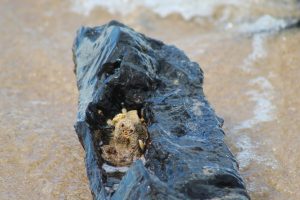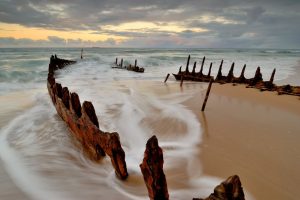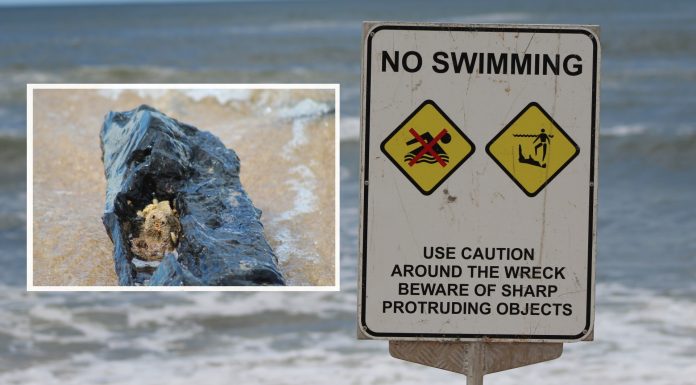The ghostly wreck of the SS Dicky has once again emerged after recent rough weather, forcing a major surf carnival to weigh anchor and move elsewhere.
The top of the famous wreck was cut up in 2015 after fears visitors or locals would injure themselves on its jagged remnants.
However, there is still plenty of ship under the sand and after significant erosion, its remains can pose a risk. The last time it was this pronounced was after Cyclone Oma barrelled past in 2019.
The timing could not have been worse for organisers of the final round of the Queensland Cup surfboat series, which was scheduled to be held on the beach on Saturday.
More than 60 crews are due to race, but an inspection Thursday morning revealed the Dicky’s rusty remains were right where the finish line would be.

Dicky Beach Surf Life Saving Club Life Member and champion sweep Rob Flood said the decision had to be made to move the carnival to Mooloolaba.
“The wreck’s remains are showing again and we can’t afford to have anyone injured, or boats damaged, particularly given the Australian Championships are only a week away,” he said.
“That stretch of beach in general is not in very good shape after the recent bad weather, so the carnival will be much safer and fairer at Mooloolaba.”
Lifeguards have put up signs near the wreck to warn swimmers not to enter the water near it.
Help keep independent and fair Sunshine Coast news coming by subscribing to our free daily news feed. All it requires is your name and email. See SUBSCRIBE at the top of this article
Surf club members believe an emergence, such as this latest one, are more dangerous than when there was more of the Dicky showing. This is because the barnacled remains lurk just below the surface and are not as visible.

The ill-fated coastal trader, which ran aground in 1893, was a drawcard for photographers and visitors to its namesake Dicky Beach for many decades before much of it was controversially cut up and removed in 2015 due to public safety concerns.
A Department of Environment and Heritage Protection report concluded it had reached a “catastrophic level of deterioration”.





